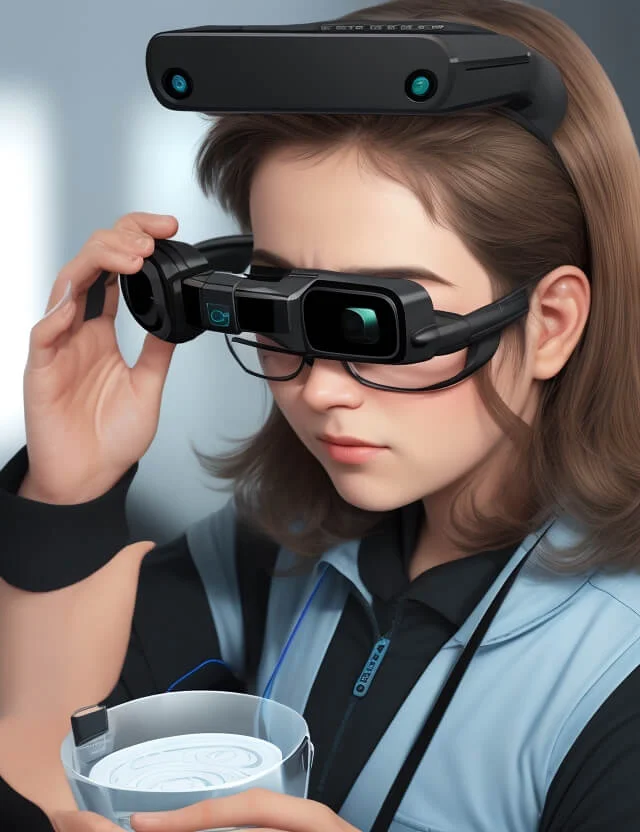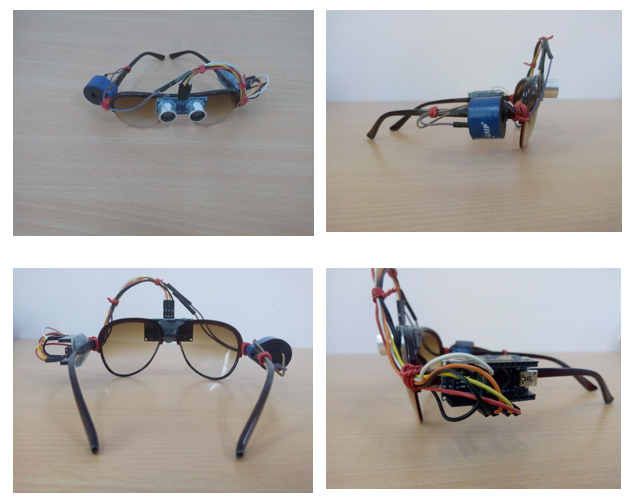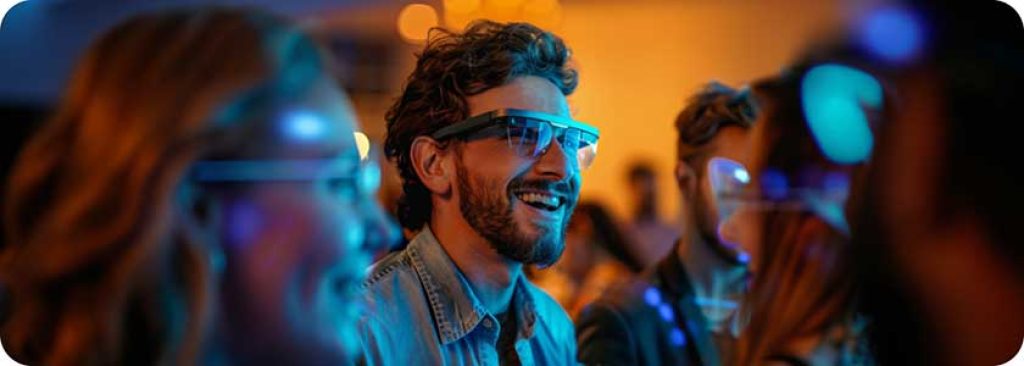OCR Devices for the Blind: Breaking Barriers with Optical Character Recognition
OCR Devices for the Blind: Breaking Barriers with Optical Character Recognition
Blog Article
Enhancing Ease Of Access Through Assistive Innovation for the Blind
The integration of assistive innovation for the blind stands for a critical improvement in ease of access, fundamentally modifying exactly how people browse their settings and involve with society. From display readers to cutting-edge clever walking sticks, these devices not only enhance freedom however also promote inclusivity in various spheres of life. As we check out the varied types of assistive tools and their tangible influence on day-to-day living, it comes to be vital to analyze exactly how recurring technological advancements are reshaping the landscape of support for the blind community. What effects do these advancements hold for the future of ease of access?
Introduction of Assistive Modern Technology
Assistive modern technology describes a variety of devices and software application made to enhance the abilities of people with disabilities, consisting of those that are visually damaged or blind. This innovation plays a crucial function in advertising self-reliance and improving the lifestyle for users. By providing alternative approaches for accessing info and executing everyday tasks, assistive innovation encourages individuals to navigate their environments better.
The advancement and application of assistive innovation embrace a range of concepts intended at cultivating ease of access. These concepts consist of user-centered design, which prioritizes the requirements and choices of the individual, and the assimilation of technology into everyday tasks. Such advancements make certain that assistive devices are not only practical but also user-friendly and simple to utilize.
Moreover, assistive modern technology includes a varied range of options, from low-tech alternatives like magnifiers to high-tech technologies such as display visitors and Braille screens. The continuous development of this field is driven by the requirement to address the unique difficulties encountered by individuals with visual problems (Wearable technology for low vision). As modern technology continues to breakthrough, the capacity for improving accessibility and advertising inclusivity remains encouraging, inevitably adding to a more fair society

Sorts Of Assistive Tools
Countless kinds of assistive tools are available to support individuals who are blind or aesthetically damaged, each designed to resolve particular demands and challenges. These tools can be extensively categorized right into three major types: low-tech, mid-tech, and high-tech options.
Low-tech devices include things such as magnifiers, Braille tags, and tactile maps. These are fairly basic tools that boost the individual's ability to engage with their atmosphere without calling for complex technology.
Mid-tech tools often involve advanced features, such as electronic magnifiers and mobile Braille note-takers. These gadgets can offer functionalities like speech outcome, enabling users to gain access to info extra successfully.

Effect on Daily Living
The accessibility of numerous assistive devices considerably improves the lifestyle for people that are visually impaired or blind, affecting their day-to-day living in profound methods. By incorporating modern technologies such as screen readers, Braille presents, and audio summary solutions into their regimens, customers acquire higher freedom and independence. These tools facilitate accessibility to details, enabling individuals to do daily jobs, such as reviewing emails, browsing public areas, and taking pleasure in media material.
Additionally, assistive tools empower individuals to involve more totally in social communications and area tasks. The ability to make use of mobile phones equipped with availability attributes allows for seamless interaction and link with others. This connection cultivates a sense of belonging and minimizes sensations of isolation.
In expert settings, assistive modern technology supports productivity by allowing people to complete work jobs effectively. Tools like voice acknowledgment software application and specialized magnification gadgets allow users to join the workforce on equivalent ground with their sighted peers.

Improvements in Innovation
Current technological improvements have actually considerably transformed the landscape of tools available for people that are visually impaired or blind. The go to this web-site integration of man-made intelligence (AI) and artificial intelligence has triggered applications that enhance navigating and object acknowledgment. For example, smartphone applications can now use AI to determine and define environments in real-time, supplying users with important contextual info.
In addition, improvements in haptic technology have actually caused the advancement of clever walking canes geared up with sensing units that spot obstacles and provide responsive responses. This encourages customers to browse their atmosphere with raised self-confidence and self-reliance. Technologies in text-to-speech software application and braille display screens have actually improved the access of electronic content, permitting for seamless communication with numerous media.
Wearable modern technologies, such as wise glasses, are likewise making strides in aiding visual problems. These tools can supply increased truth experiences, superimposing crucial info onto the individual's field of view. Jointly, these advancements not only boost the top quality of life for people that are blind however also advertise better incorporation in society. As technology continues to develop, the possibility for also more transformative tools stays on the perspective.
Future Trends and Innovations
As innovation rapidly advances, the future of assistive tools for people that are blind holds immense promise. Innovations in artificial intelligence (AI) and artificial intelligence are positioned to transform the method blind users connect with their settings. AI-driven applications are being established to improve object acknowledgment, allowing customers to recognize and browse their surroundings with greater ease and accuracy.
Furthermore, developments in haptic feedback technology are enabling the development of responsive maps and navigating help that supply real-time information via touch. These developments not only boost mobility but also foster independence. Furthermore, wearable gadgets geared up with enhanced reality (AR) website here features are emerging, supplying customers aesthetic information with sound summaries, thereby bridging the gap in between the physical and electronic worlds.
Moreover, the assimilation of clever home modern technology offers brand-new possibilities for ease of access, allowing people to manage their living settings through voice commands or smart device applications. As collaboration in between technology programmers and the blind community continues, the emphasis on user-centered layout will make sure that future advancements are tailored to fulfill the distinct demands of this population (Wearable technology for low vision). The trajectory of assistive technology guarantees a more comprehensive and empowering future for people that are blind
Verdict
To conclude, assistive innovation plays an essential role in boosting access for people with visual disabilities. The diverse selection of tools, consisting of display viewers and Going Here wise walking canes, significantly enhances day-to-day living and cultivates freedom. Constant developments in innovation and user-centered layout make sure that these tools provide efficiently to the special demands of the blind area. As advancements progression, raised inclusivity and empowerment can be expected, ultimately improving the top quality of life for those impacted by visual impairments.
The integration of assistive technology for the blind represents a critical improvement in availability, essentially modifying exactly how individuals navigate their atmospheres and involve with culture.Assistive technology refers to a variety of gadgets and software program made to improve the capabilities of people with handicaps, including those who are visually damaged or blind. Wearable technology for low vision.As technology swiftly advances, the future of assistive devices for individuals that are blind holds tremendous pledge. The trajectory of assistive technology promises a much more comprehensive and empowering future for people who are blind
In final thought, assistive innovation plays a vital duty in enhancing accessibility for individuals with aesthetic disabilities.
Report this page